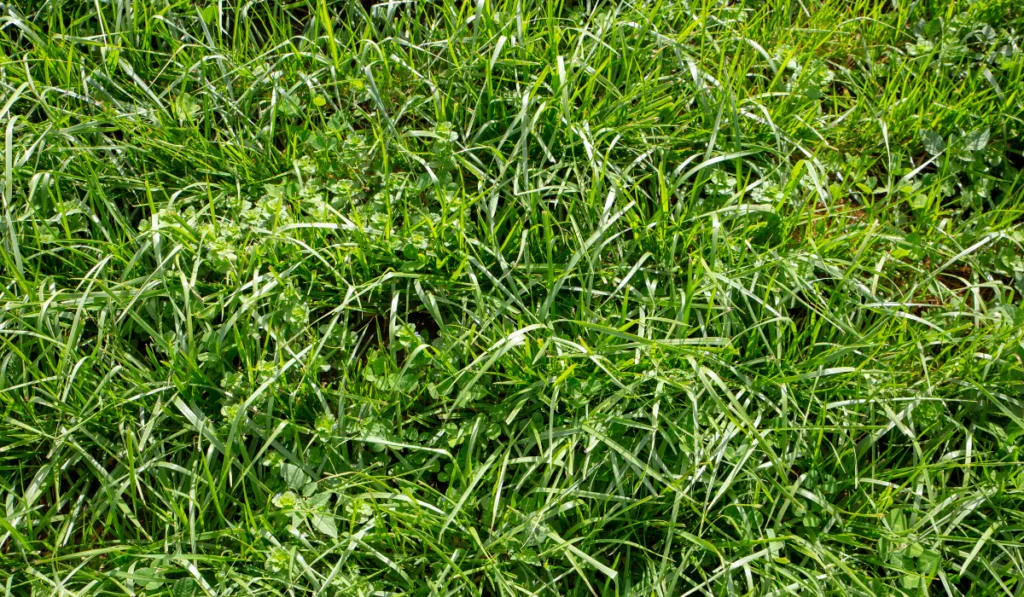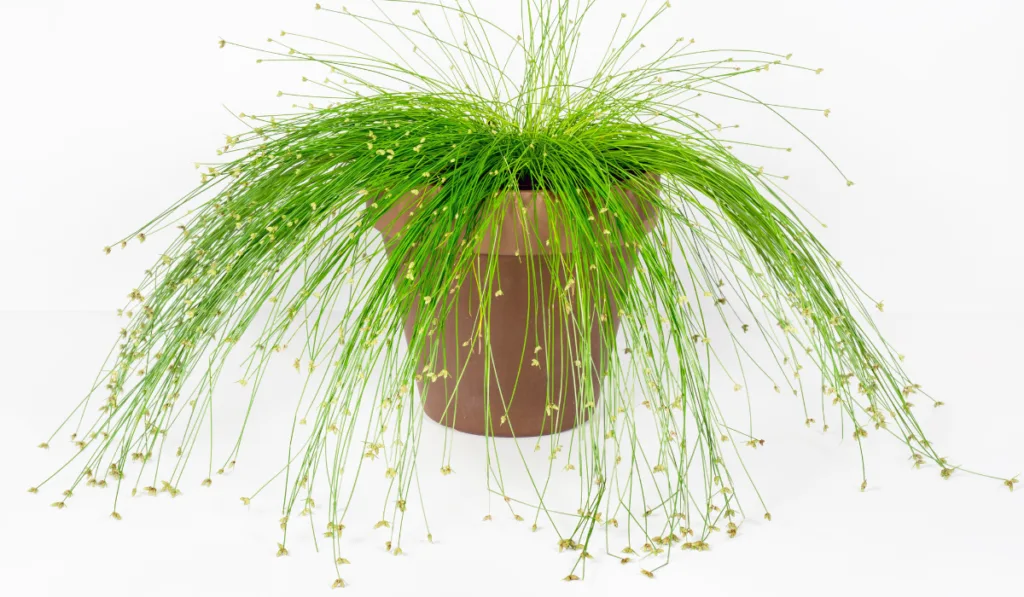If you have ever admired the types of grasses in manicured lawns as you visited different places or neighborhoods, then it is about time you upgrade your yard. There are many types of grasses you can plant in your yard. What you plant can determine the aesthetic of your whole home, so it’s an important decision.
Lawns are one of the most common types of ground cover that homeowners use on their property. This is because they are relatively inexpensive, easy to maintain, and grow quickly.
However, homeowners should not just plant any type of grasses they want without considering a few factors first. The types of grasses you should grow in your yard vary depending on:
- The climate you live in
- The size of your yard
- The desired look
- Budget limitation

This article will outline different varieties of common grasses and which ones are best suited for each region.
Table of Contents
Cool Season Grasses
Why should you plant cool-season grasses in your yard? Because they grow well in fall and spring.
Winter and moderate summer doesn’t affect cold season grasses. You will continue to have a lush green lawn despite how chilly the weather gets.
Don’t hesitate to plant cool-season grasses when the thermometer reads anywhere between 65 to 80°F as that is the perfect temperature for their rapid growth. Cool-season grasses thrive well in the northern parts of the U.S.
Warm Season Grasses
Warm-season grasses thrive well where temperatures are over 75°F. They are best suited in the southern parts of the USA, where summers are long and have high average temperatures.
When winter sets in, warm-season grasses change color to tawny brown and become dormant.
In spring, warm-season grasses regain their green color as the weather starts to warm up. However, they also become dormant when the summer heat becomes extreme. Regularly irrigating these warm-season types of grass will revive them.
Warm-season grasses come in two basic types: clumping grasses and bunch grasses.
- Clumping grasses have woody stems and short, dense leaves that form clumps (thick woody stems around tender new growth). Then, the new growth emerges from the clumps as culms that may reach a height of two or three feet (when left unmown).
- Bunch grasses have a bunchy appearance as they grow by producing lots of tillers from the crown. Bunch grasses expand by tillering.

Ornamental grasses
Ornamental grasses mostly grow in clumps and vary in height. They may reach up to 15 feet while some grow low and make great ground covers. The forms of ornamental grasses vary from tall verticals to low mounds and fountains.
Ornamental grasses are also very showy. The flowerheads mostly vary in texture, color, and size. Their colors range from deep green to yellow, and even purple, red, and blue. Ornamental grasses provide garden interest throughout the growing season.
Now that you know about these seasonal grasses and ornamental grasses, here are the types of grasses you can plant for your lawn or garden.
Varieties of Grass to Choose
1. Bermuda grass
Bermuda grass has a vibrant root system of stolons and rhizomes that spread in the soil and above the ground, making it look lush and form a dense lawn. It is a warm-season grass, thus sensitive to cold. Bermuda grass flourishes in places that experience direct sun and drainage.
It is drought-tolerant because of its deep root system that can reach up to six feet or more, making it more resilient than other warm-season lawn grasses.
2. St. Augustine grass
St. Augustine grass is also known as buffalo turf, and it is a warm-season garden grass. It is slow-growing, resilient, and is heat resistant, thus popular in Florida. You will need to water it often.
It can grow well in sandy soil and is resilient to foot traffic and lawn equipment.
3. Centipede grass

This is beautiful grass that needs less mowing. It grows horizontally on the ground creating dense turf. Centipede grass needs frequent watering to survive in extremely dry regions. Planting it is easier as it requires less fertilizer compared to other warm-season grasses.
If you are starting a yard in acidic soil, then centipede grass will do well as it withstands acidic soils.
4. Zoysia grass
Zoysia grass is similar to St. Augustine grass since it also prefers full sun. It grows slowly, and its leaves are coarse and stiff.
It is a warm-season garden grass that turns brown in the cold season and springs back to life once the weather starts to warm up.
5. Kentucky bluegrass
Kentucky bluegrass or smooth meadow grass is a grass native to Europe. It is the most popular cool-season grass because it produces thick turf that is pleasing to the eye. It has dark green soft leaves that are resilient to foot traffic and lawnmowers.
Kentucky bluegrass quickly regenerates damaged plants, and that is why it is known to have a quick self-repairing ability. It tolerates partial shade and sun but fares badly in heavily shaded areas. It has a robust root system of underground rhizomes.
6. Tall fescue

Tall fescue is a cool-season garden grass that does better in hot, dry weather compared to other cool-season grasses. Tall fescue has thick, coarse leaves that withstand heavy foot traffic and lawnmowers.
It has a deep root system that enables it to withstand heat. Tall fescue is also good for soil conservation.
7. Perennial ryegrass
The leaves of perennial ryegrass are thin, pointed, and soft. However, they are still resilient to foot traffic. It grows well in both the sun and in the shade. It establishes its root system faster when compared to other cool-season grasses.
To produce a lawn that is more tolerant to the shade, you can mix perennial ryegrass with Kentucky bluegrass seed.
8. Purple Fountain Grass
Purple fountain grass is burgundy with spiked purple color. This is an attractive ornamental grass with a fast growth rate. It is popular in many commercial and residential gardens because of its fountain-like appearance.
You can’t miss the reddish-purple color and the feather-like flowers, which makes it very beautiful from a distance and up close.
9. Feather reed grass

This is an ornamental grass that stands upright all year long and tolerates a wide range of conditions. The stiff flowering stalks give a garden an architectural feature that is very appealing to the eye.
It is a low-maintenance type of grass and is easy to grow. You can also opt to plant the hybrid variety of feather reed grass if you don’t want it to be invasive.
10. Japanese Forest Grass/ Hakone grass
Japanese forest grass is a popular ornamental grass prized for its graceful arching foliage. It is tough and grows well in moist and shady environments. Hakone grass has slender leaves that are dense.
When they start to grow, the leaves are solid green then change to golden, and to coppery golden as the seasons change. You can plant the Japanese forest grass as a ground cover along paths or around trees and in shade gardens.
11. Fiber optic grass

Fiber optic grass is an ornamental grass that got its name from resembling fiber optic lamps. It has several stems with tiny flowers and spikes at its tips.
When young, the plant is upright, but as it ages, it starts to spill over the edges, and when the cold season begins, it will change its foliage from bright green to brown or yellow.
In Conclusion
If you are considering planting grass in your yard, the type is important to know so that you get the look you’re wanting. The right grass can make a home warm, beautiful, and inviting.
You should be aware of the type of grass you want and the weather conditions in your area. If you are looking for other grass types to add to your lawn or garden, we hope that you have found one that will be a perfect addition.
